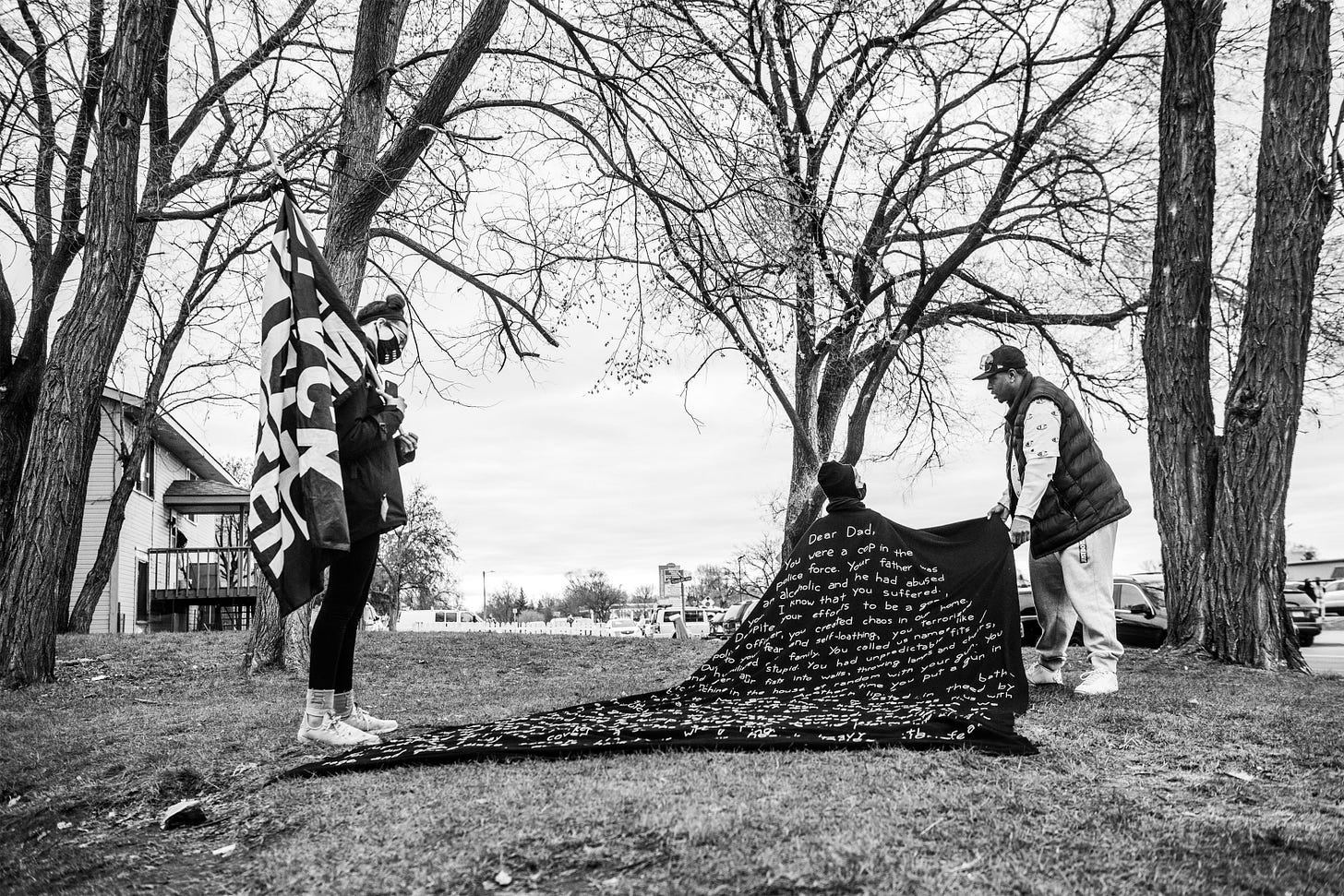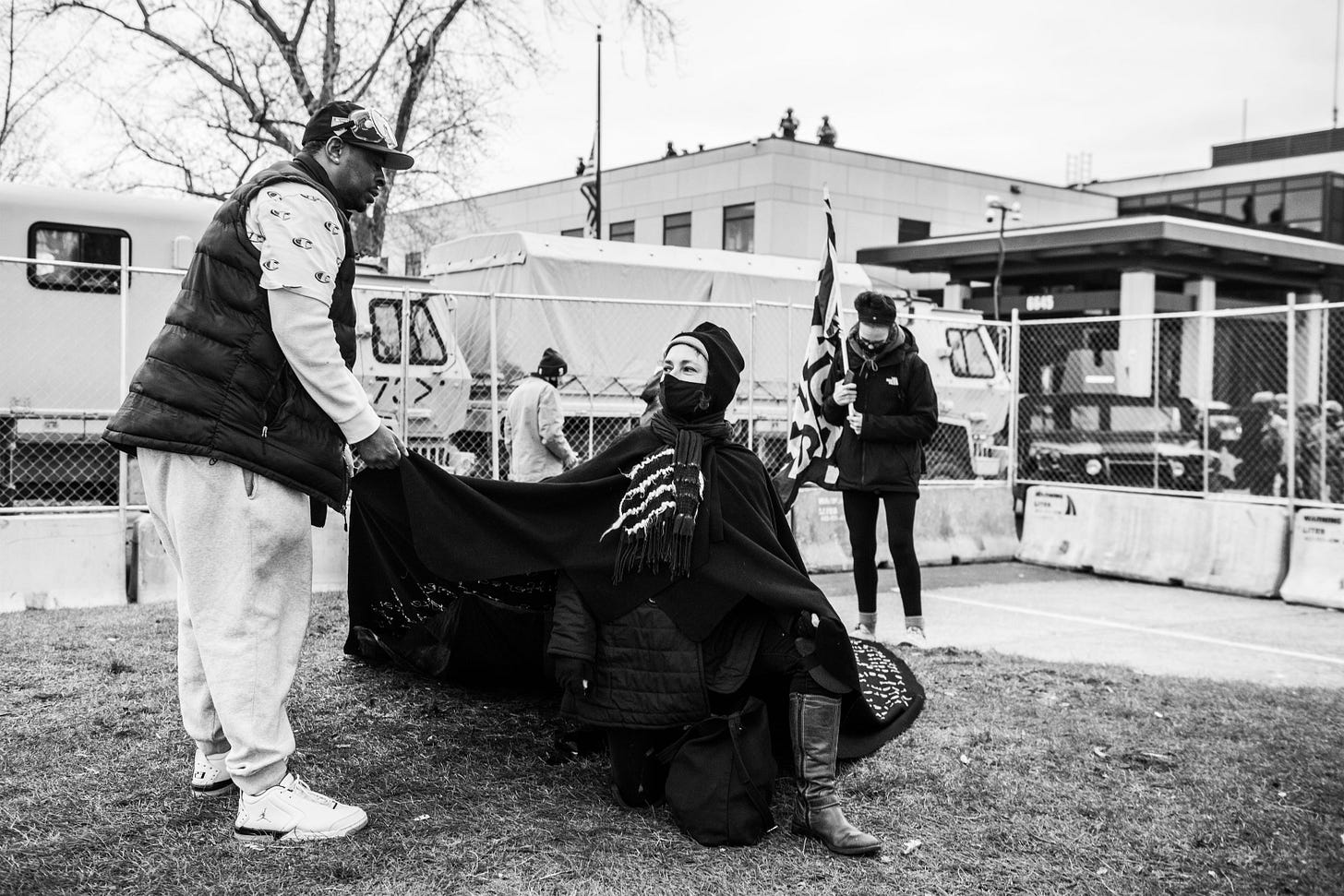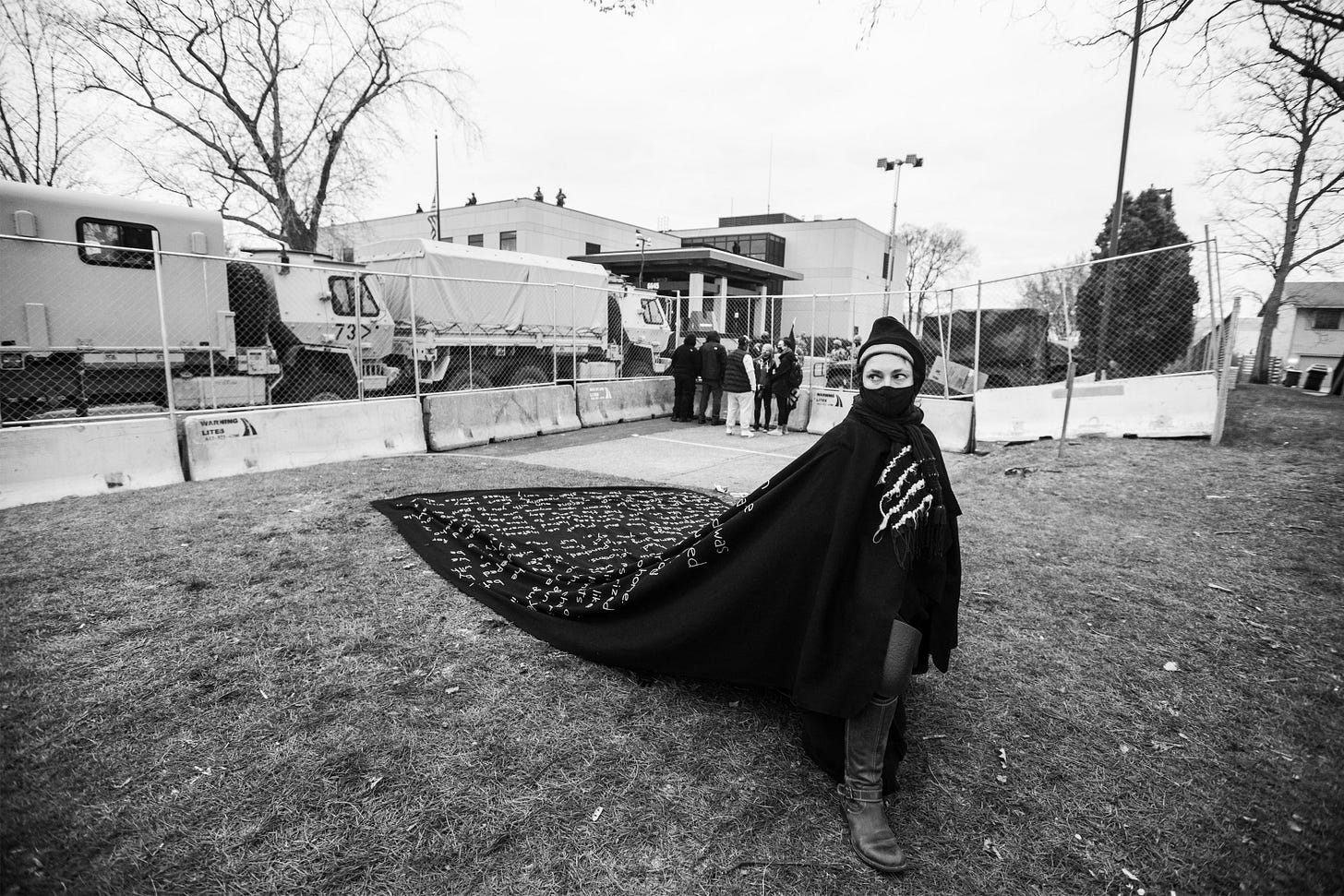Getting from Loring Park to Brooklyn Center gave me some trepidation. I needed to catch two public transit buses alone in a city that was increasingly barricading itself from its own citizens. The news about police using tear gas, and rubber bullets was truly frightening. One protester had already lost his eye from a rubber bullet shot into his face. My photographer had bought a gas mask, and eye goggles. I was not prepared for the possibility of real physical harm.
Despite my fear, I wanted to be present with all of those protesting the killing of Duante Wright. I took deep breaths, boarded the bus, made a transfer and walked the rest of the way. It took more than an hour. When I arrived, the general area of demonstration seemed smaller than I’d seen on the news. We all know how media images can create larger than life stories. We also know that the small things in life can have a great effect in the world. Again, I had to let go of any assumptions, or fears.
What I didn’t expect was an air of exultation, camaraderie, and fun. Music was coming out of big speakers from across the street of the police station. Barbeques were lit, coolers were filled with drinks, protest signs, big and small were up in the air held by people of color and white folks. A big Pan-African flag waved through the sky, and lots of people knew each other. Many were young, and yet there were people of all ages there too. They came in friendship, and solidarity. I felt a sense of relief and excitement as I entered the forming crowd. It was about 4:15 in the afternoon and 10 degrees warmer than it had been the day before. I was very grateful the temperature wasn’t freezing.
To the right of the barricaded police station was a grassy lawn with a slight incline. I saw snipers on the roof, readied police, the National Guard and massive tanks. To say they were heavily armed, and protected by formidable gear would be an understatement. It felt like a war zone, a deep contrast to the liveliness outside of the barricade. I had to take a big belly breath to continue with my plans. Placing myself just right of the protest seemed right. Demonstrators could visit as they liked and then return to the central assembly. It also felt a little safer. I pulled out my cape, put on my kneepads, and began to kneel with my back to the station. Soon enough small gatherings of people were marching over to see me, and groups of two, three, or four visited with eagerness, and curiosity. More people than I could’ve imagined were crowding around me. They were genuinely interested in the shape of my mantle and the story it held.
As each of them visited me, I was touched by their asking for permission to widen my cape to read it, to share with friends, to take photos, talk about it, and take it in. No one seemed afraid or shy to learn about the cloak on my back. Some expressed their sadness, a young couple knelt down with me for a bit of time, and one young girl of 13 said, “You’re strong.” I thought she was strong and brave for being here at such a young age.
Others asked me if I needed water, food, or anything else. Some checked on me a few times during the evening. I felt at ease and I felt their warmth and genuine care. It felt like I belonged, and that I was part of something that had a collective spirit of love. In the distance, I could see news crews, journalists, cameramen, and others with microphones all around in small groups waiting, chatting, and waiting again. I kept my resolve and I felt buoyed by everyone around me.
Within two hours, a few journalists came over and started to make inquiries…. what’s the cape about? Why are you here? What’s your name and how old are you? I was taken aback that as journalists they’d barely perused the cape before diving into questions. I told them they had to read it before I’d consider talking to them. A few of them were surprised. Even as some were stunned, or hesitant, or trying to find the right thing to say, I could see that their minds slowed a bit as they took in my letter. One older male journalist grew quiet, and another woman reporter started to open up about her stories of anguish. I did not want my cape to be a standard bearer, or slogan.
With so many journalists asking questions, I felt unsteady, confused, and hesitant. Until I had actually given serious consideration on my anonymity, I was going to protect myself. I also wanted to speak with my mother about my project. It wasn’t until I got home and thought things through that I decided to divulge my identity to Alicia Eler. She wrote a short article in the Star Tribune.
Chris arrived with his camera, and I felt relieved that I saw a familiar face. It was a good connection; someone I trusted. Near 7:15 or so, a tall African American man with a cap came over, and spread my cape out to read it. As he took in the embroidered words, he said out loud, “Wow this is real. I know so many people who have a similar story, so many … “ and then the words trailed off. He wiped tears away from his eyes. I could see he was genuinely moved, but I wondered if it felt too overwhelming. There was no way to know. It appeared that he pushed away his sadness and then, he continued along his way. After three hours of kneeling, I packed up my things, and went back to Loring Park.






